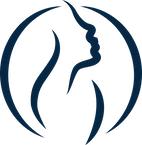
After rhinoplasty performed at Omaha Face Plastic Surgery and Med Spa in Omaha, NE, you may be anxious to see the results of your procedure. However, patience is important. Before you can enjoy the results of your procedure to the fullest, there is a six-week recovery period: but it’s not as long as it sounds. Today, we reveal what you can expect.
Rhinoplasty Recovery Timeline
24 Hours Post-Op
During the first 24 house after your procedure, you may feel drowsy and doze in and out of sleep. You may feel this way if you receive sedation or general anesthesia. If you only receive local anesthesia and stay awake during the procedure, you will not feel drowsy afterward. You may not drive within 24 hours of waking up after anesthesia or sedation.
There is nothing wrong with lounging around the house during the first 24 hours post-op. In fact, we recommend that you do as little as possible in the first 24 hours after your procedure. Your focus should be on resting.
48 Hours Post-Op
Two days after your procedure, you may still feel tired. You may not drive within 24 hours of taking prescription analgesics. So, if you take prescription analgesics and need to leave the house, arrange for a loved one to drive you. We highly recommend that you start walking around two days after your procedure to get your blood flowing.
However, you should still be focusing on rest. If you are taking a prescription that can cause drowsiness, you may want to prepare leisurely activities that can keep you entertained without requiring too much focus. For example, you may want to watch your favorite movies rather than playing an intense computer game.
Five Days Post-Op
Five days after your procedure, you are more than welcome to return to work or school. The only exception to this is if you don’t have an office job. If your job requires a lot of physical exertion, you should wait until ten days after your procedure to return to work. At this point, you should be feeling like your old self, but your skin hasn’t finished healing yet.
Two Weeks Post-Op
Every body heals at a different rate. Some people who work in a warehouse or construction job will feel ready to return to work at ten days post-op, but overall, you will not need to take longer than two weeks off of work. However, you should let your supervisor know that you are recovering from a procedure.
Three to Four Weeks Post-Op
Between three and four weeks after your procedure, you should feel up to moderate-intensity cardiovascular activities, such as swimming, spinning, indoor rowing, or jogging. However, your cartilage and bones are not yet fully stable, so, you should still avoid resistance exercises and vigorous-intensity cardiovascular exercises.
Six Weeks Post-Op
Six weeks after your procedure, the cartilage and bones in your nose will be fully settled. At this time, there will be no restrictions on the exercise you can perform. You are free to run as hard as you want and lift as heavy as you want. You may also wear glasses and blow your nose again.
How to Speed Up the Recovery Process
Listen to Your Body
You can’t make your bones set faster, but you can increase the rate at which your skin heals from your rhinoplasty. The most important thing you should do is listen to your body. Walk when you feel up to walking. Eat healthy foods when you feel hungry. Rest when you feel like you need to rest. And don’t go to work if you’re not feeling up to it.
Everyone feels different during the recovery process. But if you think your recovery process is abnormal, please don’t hesitate to call us right away. For example, if you experience gastrointestinal discomfort when taking your antibiotics, ask if you can switch the timing of your dose or the antibiotic itself.
Listen to Your Doctor
To make your recovery process as smooth as possible, it is crucial that you follow all of your doctor’s instructions. Just because you feel fine does not mean that the underlying cartilage has settled into its final shape and position.
During your initial consultation, and again after your procedure, you will be given specific instructions regarding medications you should take post-op, how to clean the skin around your nose, when you should come in for a follow-up appointment, and more instructions. If you have any questions or feel like you can’t comply, please let us know as soon as possible.
Elevate Your Head
While most Americans sleep on their side at night, it is very important that you sleep on your back with your head elevated for the first six weeks post-op. If you sleep on your stomach or side at night, you may or may not feel comfortable. But regardless of how you feel, you will be prolonging your recovery period significantly.
When you sleep on your side or stomach, you are placing too much pressure on your freshly setting cartilage. This can affect the results of the procedure. If you already sleep on your back without tossing and turning, place at least two pillows under your head at night. Use three pillows if at least one of the pillows is thin.
Sleep in a Recliner
We recommend that our clients who usually toss and turn at night practice sleeping only on their back. To help prevent tossing and turning, we recommend sleeping between rolled up towels placed flush against the body. If you try to sleep comfortably on your back for seven days and you’re still sleeping poorly, sleep in a recliner to ensure you remain stationary all night.
Get Plenty of Rest
We cannot stress enough how important it is to get enough rest during the first six weeks post-op. Again, your skin, bones, and cartilage must settle into their final resting place and recover from being cut open and shifted. This takes energy. To ensure your body has enough energy to heal itself quickly, sleep between 7.5 and nine hours nightly.
We recommend going to bed when you feel tired and not setting the alarm to wake up in the morning. You cycle through several phases of sleep at night, including REM (rapid eye movement) sleep. It is during this sleep phase that most healing occurs. You typically cycle through all phases every 90 minutes. Nine hours of sleep would give you six REM phases.
Eat Plenty of Protein and Colorful Vegetables
After your procedure, you may want to eat something convenient, like a pizza or burrito. But you really need to think about your nutrition carefully. Since you may not want to care about your diet in the days following your procedure, make a meal plan and prepare healthy foods before you come in for your procedure.
It is very important that your meals center around colorful vegetables and protein. Protein is important because collagen is a protein that keeps your skin healthy and strong. Without enough of this nutrient, your skin will take longer to heal. Colorful vegetables are also important because they contain essential micronutrients that your skin, bones, and cartilage need for rapid healing.
Use Cold Compresses
During the first 72 hours post-op, you may want to use a cold compress to keep yourself comfortable. However, you must take care not to place the icepack directly on your nose. Rather, hold it in place against one of your cheeks to ensure you do not accidentally shift any of the setting cartilage or bones.
Stay Cool
Staying cool during the first six weeks of your procedure will go a long way in ensuring you do not prolong your recovery period. This is of the utmost importance during the first three to four weeks after your procedure, which is one of the reasons that you should not engage in cardio that is too strenuous.
You should also avoid eating steaming bowls of soup, taking steaming hot showers, relaxing in a steam room, or enjoying a dry sauna. When you bathe, make sure you’re taking a lukewarm shower while keeping the faucet no higher than neck level. Eat foods that are room temperature or colder.
Don’t Blow Your Nose
Remember, you should not blow your nose in the first six weeks after your procedure. You may feel some congestion during this time. But you must resist the urge to blow your nose. If you feel congested, take comfort in knowing this feeling is caused by swollen nasal tissues rather than actual mucus in your sinuses.
If you can’t get over the urge to blow your nose, ask about a saline nasal spray to moisturize your nasal passages and reduce swelling. You may purchase a saline nasal spray or make your own at home. Alternatively, you can reduce swelling by applying a cold compress to one of your cheeks or taking arnica supplements four times daily.
Don’t Wear Glasses
As difficult as it is, it’s important to avoid wearing glasses during the first six weeks post-op. This is for the same reason as you shouldn’t sleep on your back or side. To ensure you don’t extend the recovery process, you need to avoid putting pressure on your nose.
If you wear prescription glasses, ask your optometrist for contacts to wear during your recovery period. If you wear sunglasses, wear a ball cap to keep sunlight hitting your eyes.
Stay Out of the Sun
Another important step in making your recovery smooth and comfortable is limiting your exposure to the sun. When you go outside during daylight hours, make sure you are wearing a broad-spectrum sunscreen with a sun protection factor of at least 35.
There are several reasons why it is important to protect your nose from the sun. Primarily, exposure to the sun’s UVC rays slows the production of strong collagen and damages existing collagen. This will slow your recovery. Furthermore, sun exposure can elevate your blood pressure and exacerbate the feeling of nasal swelling and pressure.
Learn More About the Recovery Process Today
Rhinoplasty recovery may seem extensive at first glance. But even though it lasts six weeks, you will be free to return to work or school within five to 14 days. Other than keeping your blood pressure as stable as possible, there is little you have to think about during the last four to five weeks of your recovery period.
If you have any further questions about recovery from rhinoplasty, please do not hesitate to ask. Call us at Omaha Face Plastic Surgery and Med Spa in Omaha, NE today at (402) 882-7722. Dr. John Harbison is a double board-certified plastic surgeon and can give you actionable advice on how to speed your recovery process along.

